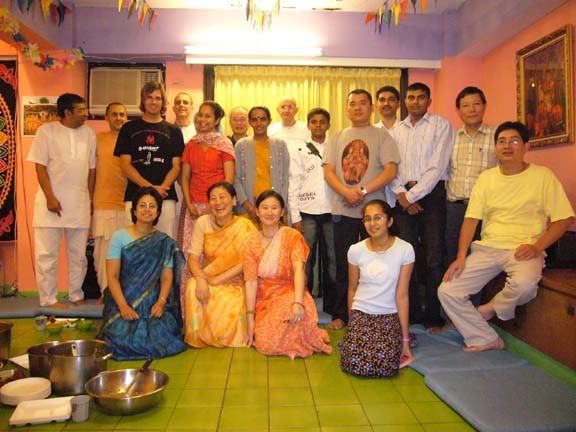 I ordered a new suitcase from a very nice suitcase store in Germany. As with almost every store in Germany, they ship using DHL.
I ordered a new suitcase from a very nice suitcase store in Germany. As with almost every store in Germany, they ship using DHL.
I wasn't in when the delivery was first attempted. The card said "sorry me missed you when we tried to deliver at time: pm". "pm" is kind of vague time, but ok, "no problem", I thought. I'll just phone them and arrange for another redelivery.
So, I phoned the DHL redelivery line and got an automated service. It asked me to speak clearly all kinds of information: package number, my name, my address, my phone number. It offered no feedback as to if it was using some kind of voice recognition, or if some poor soul was going to listen to the recording and enter the data into a computer manually.
So, the day when I asked that the next delivery occur: nothing. I stayed at home all day waiting and nothing came.
So, I phone DHL again. This time working my way though the number menu until I finally get a human being one the phone. The guy tells me that "yes, we've been having some trouble with the automated system, I'll manually book a delivery for you". So, I arrange for a delivery the next day and ... nothing. Again, no DHL package for me.
So, once again I phone the (expensive) DHL line. This time I insist that they phone the local distribution office and find out that is going wrong. The person in the local office tells me that someone has just phoned them to pick up my package from the depot. "What?! I certainly didn't phone to pick up my package".
It appears that someone somewhere wrote a wrong package number on my package and that's why the re-delivery attempts were not happening. So, I ask them to redeliver again the next week. The response: "we will try to deliver on Monday, if not then on Tuesday."
What kind of courier service doesn't know when they will deliver a package?! Do they expect me to stay at home all day for weeks on end waiting for their messed up logistics to serendipitously deliver?!
The lady promises to give me a phone call first thing Monday morning and tell me if it will be Monday or Tuesday.
Monday passes. No phone call. No package. This is getting really annoying.
So, I (again) phone DHL. They tell me that the package has been scanned for delivery and put onto the van, but no delivery was made and no card was left. So, the operator I spoke to thought they must have mistakenly scanned the card and not actually put it into the truck for delivery. They'll deliver tomorrow. Promised!
"Tomorrow" comes and goes. No delivery. I phone DHL again (!) and ask for the number of the local branch. The first person I talk to offers to arrange for a redelivery and phone me back. I say: "no way, not again" and ask to speak to the manager. The manager is understanding and explains that they probably have a new driver who ran out of time yesterday because he was driving in a new unknown area. He offers to personally go down into the warehouse, find the parcel and prioritize the delivery for the next day. I ask him to deliver to it to my office address instead of my home, since, if they mess up the delivery date again, at least someone will be at the porters office in the University at all times.
The next day, I'm in the office, but no delivery comes. So, at the end of the day, I once again phone DHL and ask to speak to the manager I spoke to the day before. His phone rings a few times and then the connection cuts off with a busy signal. I try again after a few minutes. Same result.
So I choose another path through the DHL phone navigation network and get a "customer feedback" representative. She explains that it is illegal for customers to redirect their delivers to alternate destinations (something to do with insurance law). I (completely frustrated at this point and thinking I have no hope of ever getting the delivery) ask that the package be delivered the next day and that she please makes sure this happens, no matter what (not that that hasn't been promised many times before).
I get home and, much to my surprise, there is a big box waiting for me outside my door with a note from my landlord. It turns out that he was doing some repair work in the flat below mine during the day and just happened to be at the door when the DHL delivery truck came (it seems that they re-tried delivering to my home address when they couldn't change the delivery to my office address; although, of course, they didn't think it might be a good idea to tell me about this so I could be at the right location to receive the delivery).
So, after over two and half weeks of trying, I finally have my order. However, it took providential arrangement to make it happen. It seems DHL need divine intervention to successfully deliver a package.
Bottom line: please, if you at all help it, don't ever use DHL!! (and I sincerely hope I cost DHL a lot of business with this blog post).
Philosophical lesson: you are not the doer (BG 3.27).






 I went to a Klassentreffen (high school reunion) of my former high school in Germany (the Taunusschule K??nigstein) over the Christmas vacation. It was interesting and nice to see all my school mates again.
I went to a Klassentreffen (high school reunion) of my former high school in Germany (the Taunusschule K??nigstein) over the Christmas vacation. It was interesting and nice to see all my school mates again. Gaura Purnima. The Golden Moon festival. The appearance of Lord Caitanya Mahaprabhu. The most important day of the year for Vaisnavas.
Gaura Purnima. The Golden Moon festival. The appearance of Lord Caitanya Mahaprabhu. The most important day of the year for Vaisnavas.

 For this week's Vedicsoc session we got two of our regulars. We discussed prison.
For this week's Vedicsoc session we got two of our regulars. We discussed prison.